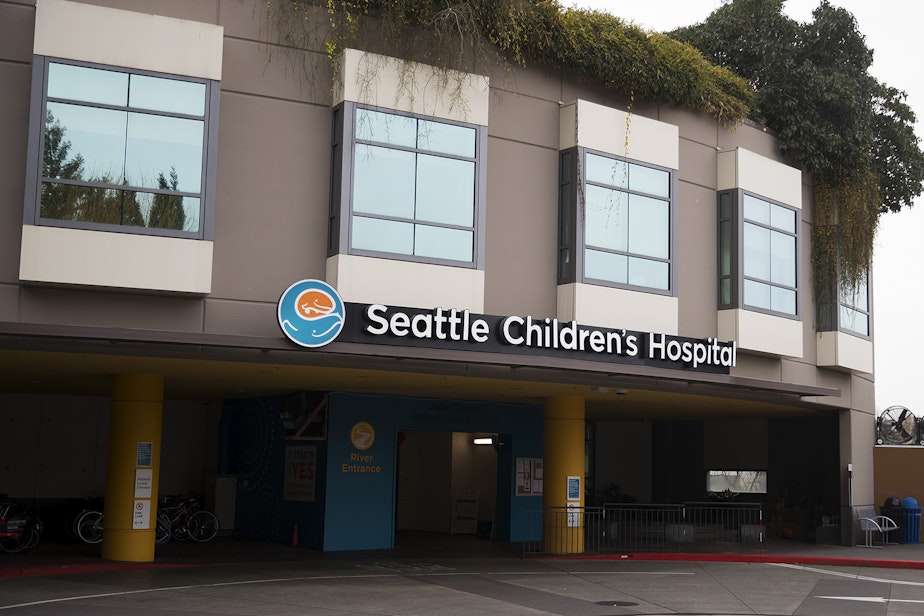Kids from 90 families are losing their spots in Seattle’s childcare market

Finding childcare was already tough in Seattle before the pandemic hit.
Now 90 families face another crisis: Their center is closing.
The Child Care Center at 70th and Sand Point, sponsored by Seattle Children’s Hospital for families of staff, is slated to shut down next June. Parents who rely on it are scrambling to find alternate care while trying to persuade hospital executives to save it.
The parents find themselves once again in the middle of a tight childcare market where waitlists can stretch years. The parents say they’ve collectively contacted more than 70 centers and found no open full-time spots.
They're in the situation that parents across the region have been facing since the coronavirus arrived.
Currently, 17% of King County’s licensed childcare programs are closed, either temporarily or permanently because of the pandemic, according to data from the nonprofit Child Care Aware of Washington. That includes 134 closed centers in Seattle. Statewide, 19% of licensed programs are closed.
Meanwhile, providers say they need more state support to remain open during the pandemic.
Many providers are operating with half as many children so they can clean and social distance, said Deeann Puffert, CEO of Child Care Aware of Washington.
Closures are “so much more” than the numbers of spots lost, Puffert said, as caregivers for children can be “significant anchors” for families.
“It’s about how do we create the sense of safety in what seems like a very unsafe world right now?” she said.
K
UOW spoke to spouses of two Children’s workers and one Children’s employee who all asked to remain anonymous for fear of retaliation by the hospital.
Getting their children into the center in the first place was a challenge. One employee told KUOW she started calling childcare centers when she was five weeks pregnant – but no childcare spot opened up until her son was nearly a year old. Her two children currently attend the child care center sponsored by Children’s Hospital, and now she’s put them on waitlists at four other centers.
If no spots open up, she said, “I will probably need to leave my job.”
The spouse of another Children’s employee said her children are now on seven waitlists, at a cost of around $1,000, she said. The spouse is a physician at another institution, and she appreciated how long the Children’s Hospital Child Care Center stayed open each day, from 6 a.m. to 8 p.m., to accommodate long and variable healthcare worker schedules. It’s going to be hard to find new childcare to cover those hours, she said, and she may have to reduce her work hours as a result or consider hiring two nannies.
“As a working mom, I feel like it’s especially a slap in the face to working moms,” she said.
In an emailed statement, Children’s Hospital says the organization has taken a financial hit because of Covid-19 and announcing the closure of the childcare center was one of “several proactive measures to be good stewards for our employees and our financial resources to serve our community and deliver on our mission.”
“We understand the significant impacts this decision has on affected staff and their families, and we are prepared to support them through this transition,” according to the statement.
But the parents of the Children’s childcare question whether money is really the issue. They point to a Zoom call on July 23 with hospital executives where parents presented their concerns in a 26-page slide deck. So many people logged into the Zoom call, the number of attendees exceeded the platform’s capacity, the Children’s employee said.
During the meeting, parents say, they offered to pay more in tuition or help fundraise to keep the child care center open, but executives declined and said the problem was the subsidy Children’s pays to run the center, according to interviews with parents and notes reviewed by KUOW.
“Those two statements are not congruent,” the spouse of a Children’s employee said. “If it was a matter of money you’d think they’d be open to us finding an outside source of money, but they’re not.”
Children’s did not respond to a question from KUOW on the amount the hospital spends on the center or why offers to fundraise were declined.
Up the street from the hospital at the Children’s Center at Burke Gilman Gardens, executive director Jennifer Kelty said parents are calling and emailing. Her center’s classroom for toddlers is licensed for 14 children, she said, and another 75 children are on the waiting list. Generally, waiting lists around the University of Washington and Children’s Hospital can stretch from one to three years, Kelty said.
“We expect our waiting lists to continue to grow even longer as a result of this closure and due to the continued impact of COVID on local providers,” Kelty said.
S
o far, many childcare center closures during the pandemic have been temporary. Data from the Washington State Department of Children, Youth & Families shows that the number of childcare slots in the state contracted 43% from late March to the end of April. Some slots have returned since then, but the numbers are still down around a quarter compared to before the pandemic, at 140,631 slots.
In Seattle’s Central District, the Community Day Center for Children closed for around three weeks at the beginning of the pandemic and reopened on April 6 with stricter policies and staff wearing masks and practicing social distancing, director Lois Martin said.
“Even if (children) have the sniffles, they have to stay home until it’s gone,” Martin said. “That’s for 72 hours.”
Martin is also the vice president of an industry group, Washington Childcare Centers Association, and she said providers need direct support from state and federal sources.
“We are essential to this economy being able to rebound, no different than all the other essential workers,” Martin said.

